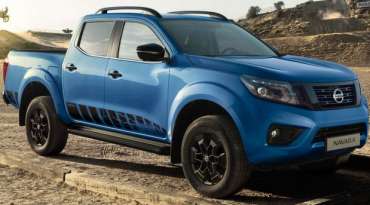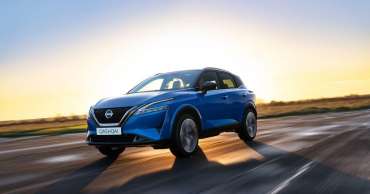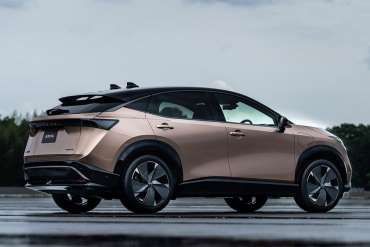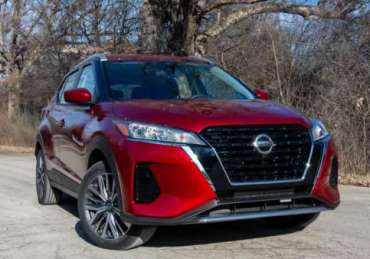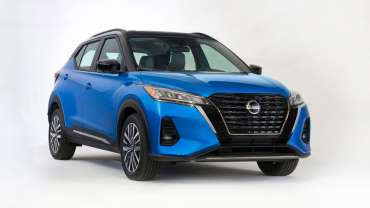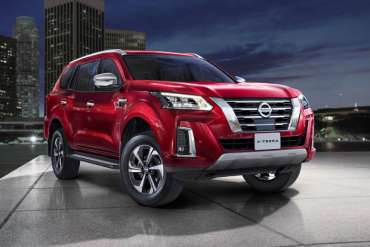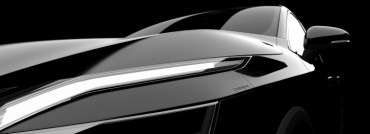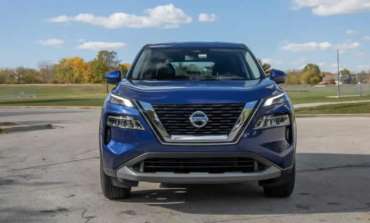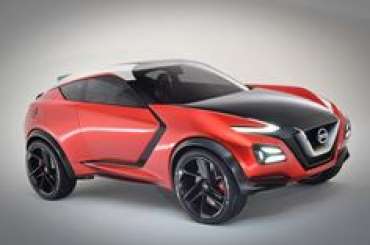Displaying items by tag: Nissan
From next year, Nissan will no longer sell Navarro on the European market
Nissan announced earlier that it plans to close its factory in Barcelona, which basically means that Navarra will be withdrawn from sale. At least in Europe.
According to Nissan, the decision reflects the shrinking pick-up market in the Old Continent, where only 116,280 sales were registered last year. The Renault Alaskan and Mercedes X-Class, sister models of the Navarre, were also made in Barcelona, but were discontinued for the same reason.
"Production of the current-generation Nissan Navara for European markets will end when our Barcelona plant closes in December 2021, and sales will be completed during 2022," Nissan said in a statement to Automotive News. "This reflects the declining segment of trucks in Europe and the shift that many consumers are taking from trucks to our range of modern and efficient vans."
Nissan had an alternative solution to import Navarre from Thailand to Europe, although the board of directors has already decided not to do so.
Navarra was first launched in 1985, and was even produced in Greece for the local market. The 2004 model is still considered very important for the European segment of the truck, as it has revolutionized it with a more comfortable cabin, new features and more refined driving quality. Mercedes also tried to steal sales from segment leaders Ford Ranger and Toyota Hilux in Europe with the X-Class, which was closely linked to the Navarre. It was discontinued in May last year due to poor sales, and was followed by Renault Alaskan.
This is a brand new Nissan Qashqai! Now without a diesel he is shooting at the top of the class again
The third generation no longer has diesel engines, which as an alternative come with hybrid versions of the existing turbo gasoline
Three million copies sold in Europe and a total of five million worldwide. A nice number for both previous generations of Nissan Qashqai, a mega-popular SUV of the compact class, well accepted among Croatian buyers of this class. Great numbers and history, but which set a high bar of expectations from the newly introduced new model.
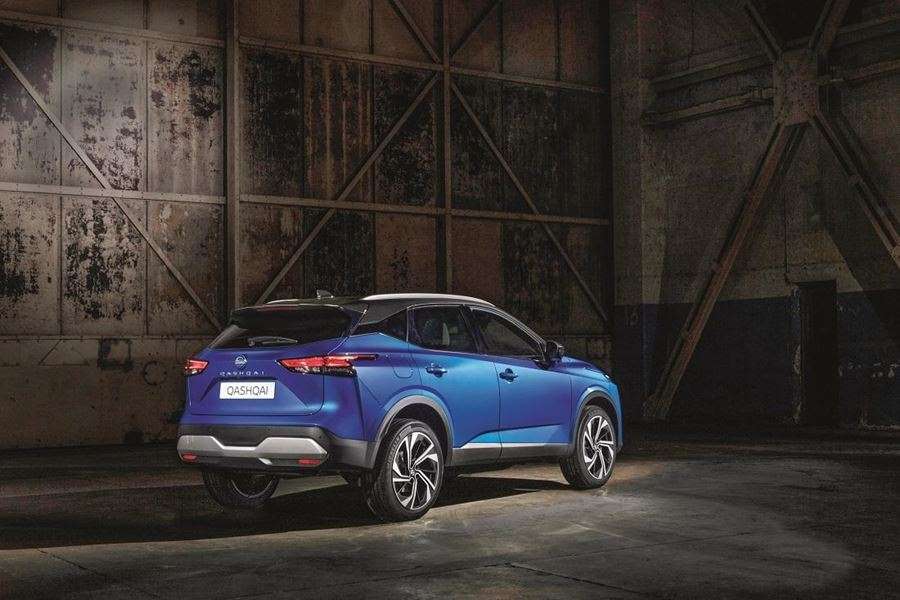
Nissan Qashqai, photo: Nissan
There is not much to say about design, the first step in appearing in front of customers. Qashqai retains the recognizable idea and lines of the previous model, but with cleaner lines, some details performed as a variation on the theme of Juke and Nissan's signature with a mask in the characteristic V-shape. A dose of modernism is given to it by details such as self-regulating, smart LED Matrix lights, 11 body colors, five two-tone combinations and rims that reach up to 20 inches as standard. The first photos create the impression of growing size and - that's right.
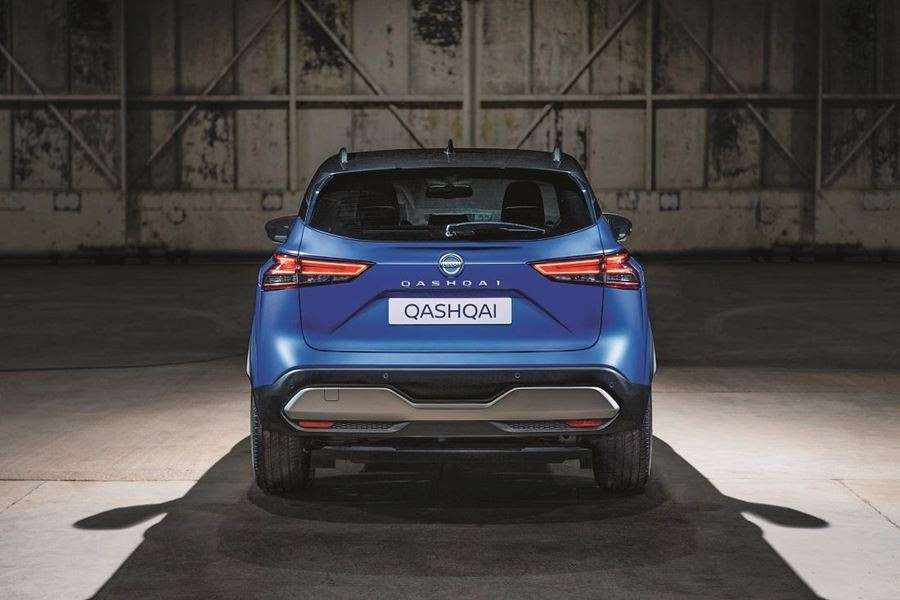
Nissan Qashqai, photo: Nissan
It is 3.5 centimeters larger (4,425 m), 3.2 centimeters wide (1,838 m), one centimeter high (1,635 m), and the larger corporate Renault-Nissan CMF-C platform, two centimeters larger axle, gives the impression of size. spacing (2666 mm). The result?
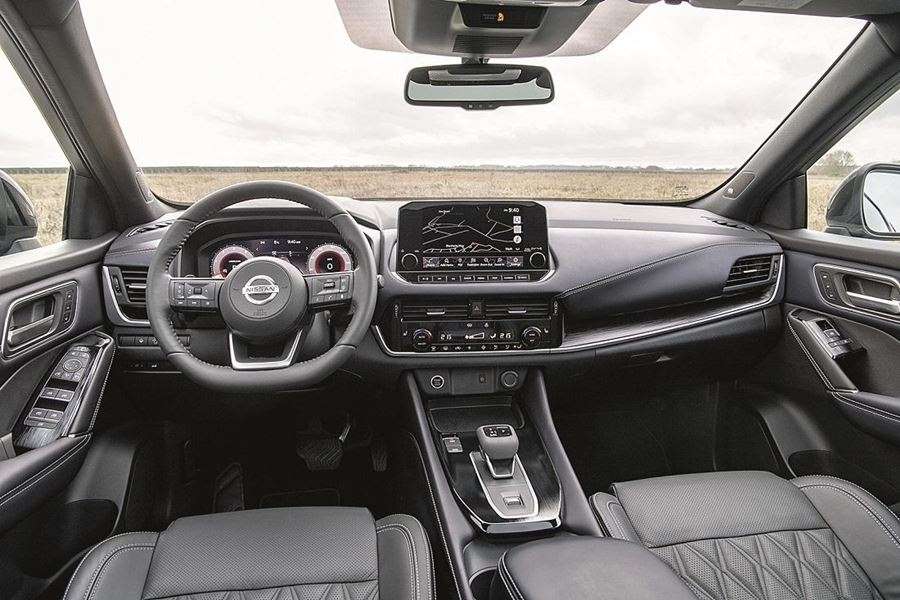
Nissan Qashqai, photo: Nissan
Round three centimeters more space for the passenger's knees in the rear seat (maximum 61 centimeters), a centimeter and a half more headroom and significantly more space in the front seats, where two-meter-tall people will also have a comfortable position. The rear pair of doors opens up to 85 degrees, which greatly facilitates access to the rear seat, and especially the placement of children in the seat.
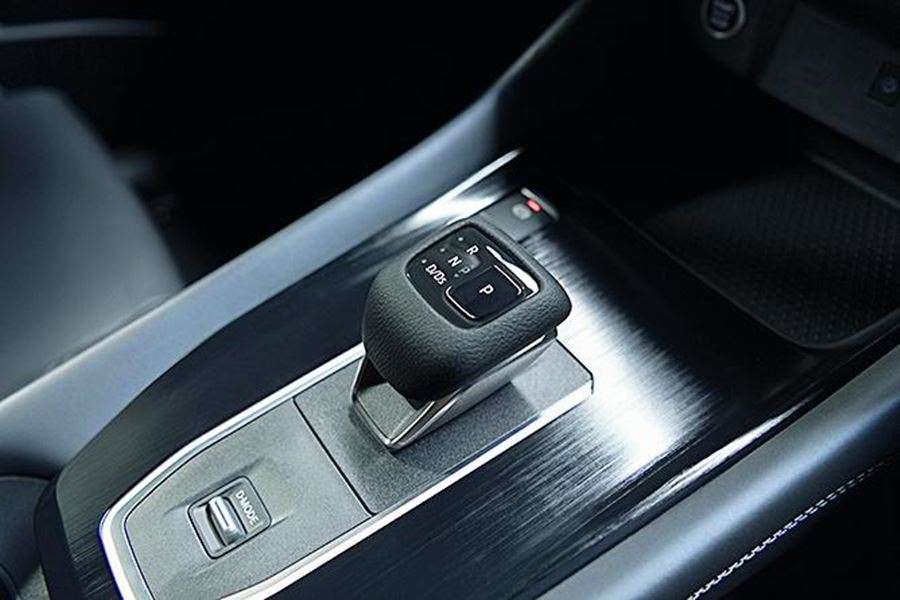
Nissan Qashqai, photo: Nissan
On top of all that, the trunk grows, by 50 liters, in this class more suitable 480 liters. It will be easier to access because the entry threshold is lowered by two inches. Aluminum alloys are also used more in the construction of the body, so let's say four side doors, fenders and a roof bring total savings of 21 kilograms. The fifth door is now made of composite materials and is 2.6 kilograms lighter, and the platform itself on the scales shows 60 kilograms less than the previous one. Niisan engineers swear that it is almost half as strong, or 41 percent.
The interior also boasts noticeably better materials, including nappa leather, a generally more expensive visual and sensory atmosphere, but also hedonistic elements of equipment such as massage seats or a concert Bose Premium hifi system with 10 speakers.
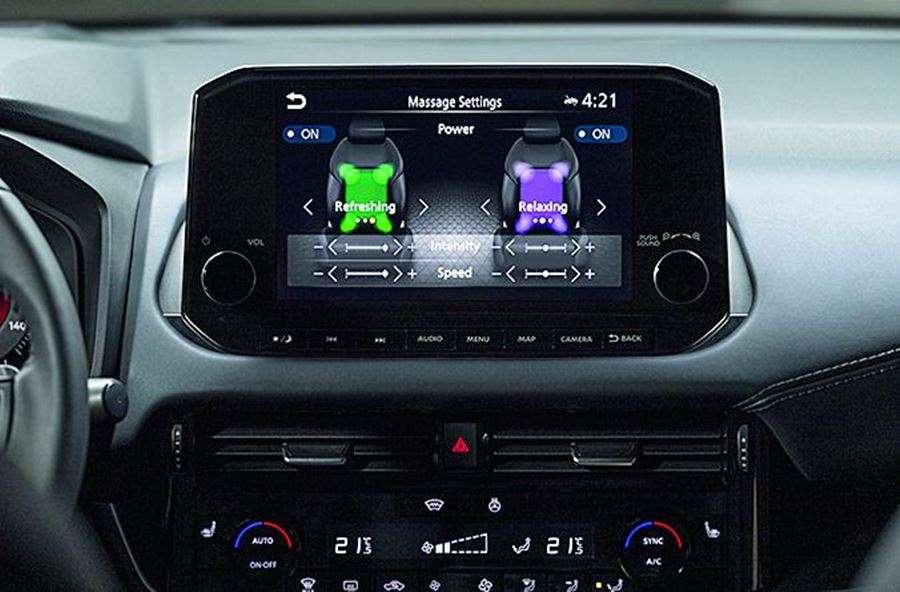
Nissan Qashqai, photo: Nissan
Digitization has also knocked hard on Qashqai’s doors. Large digitized 12.3-inch instruments, advanced multimedia with a 9-inch 3D screen, innovative and largest-in-class head-up 10.8-inch screen, interesting animations and wireless mobile charging are part of the new ambience accompanied by a smartphone app which will be able to control the secondary functions. Furthermore, the ProPilot safety system gets a connection to the navigation and detects real and potentially dangerous events in front of and around the car faster and more accurately. The system comes in versions with automatic transmission.
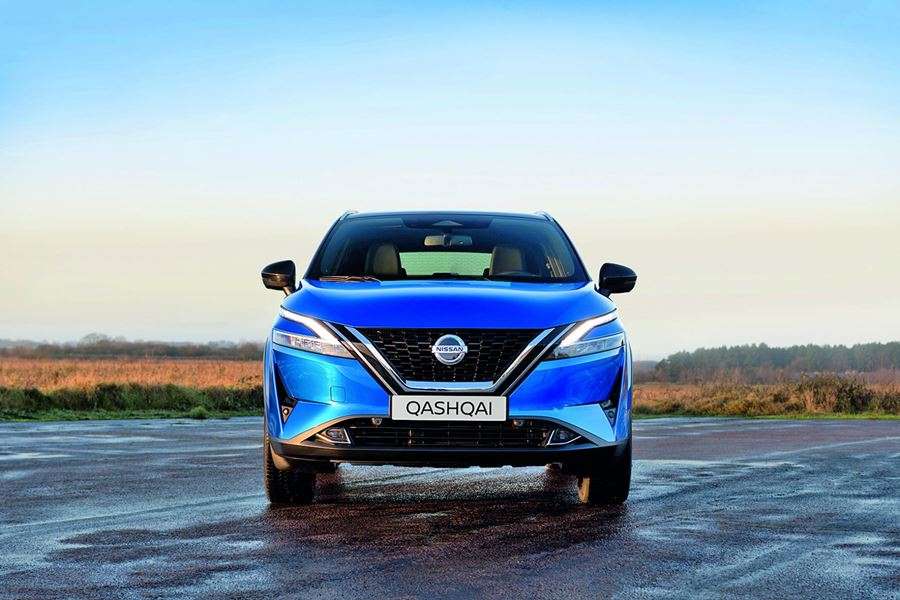
Nissan Qashqai, photo: Nissan
One of the significant innovations will be the electrification of the drive, in terms of a 12-volt mild hybrid version of the famous 1.3 turbo gasoline known designation DIG-T (Direct Injection Gasoline-Turbo), upgraded to 50 components. Mild hybridization does not affect the change in rated power, which is maintained at 140 and 158 hp with torques of 240 and 260 Nm, but will have positive effects on reducing consumption and have the function of giving additional momentum of power and torque when accelerating. The base engine has front-wheel drive and a six-speed manual transmission, more powerful as well, but it comes with four-wheel drive 4x4 and a new-generation X-tronic automatic transmission (CVT) as options. With automatic torque increases to 270 Nm.
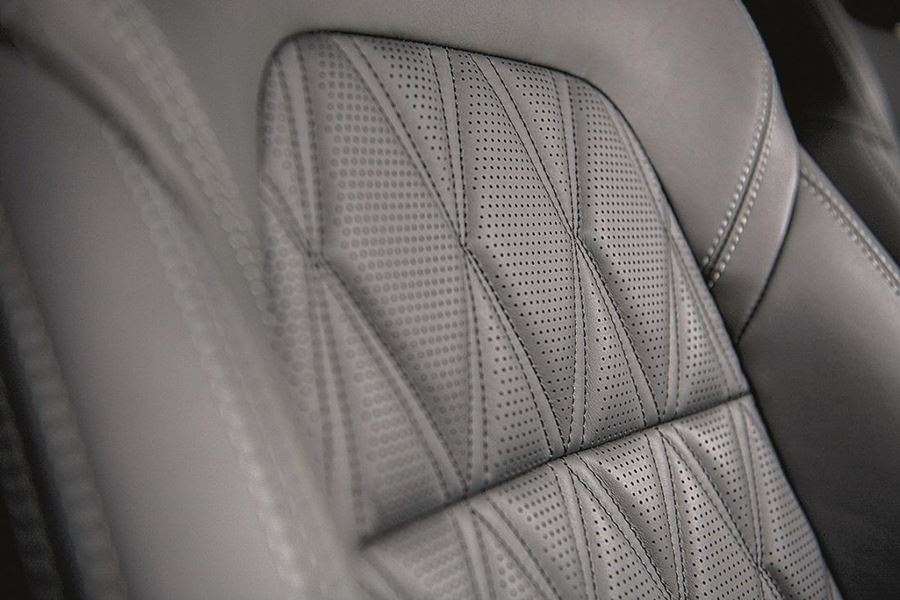
Nissan Qashqai, photo: Nissan
The hybrid system carries 22 pounds of weight. An interesting hybrid version of the e-Power unusual operating principle has also been announced, in which the 1.5 turbo petrol engine has a secondary function in relation to the electric motor. The total power output is 190 hp, but the story is somewhat reversed compared to classic hybrids. The petrol is basically not used for propulsion, but primarily for charging a powerful battery and transmitting power to an electric motor that drives the wheels itself, so the ride is very reminiscent of driving an electric car.
The Qashqai also gets a single-pedal e-Pedal braking and acceleration system, known from the electric Leaf. With the new platform, the basis of a more complete driving experience will be thorough refinements on more precise and flexible steering wheel operation, but also filigree polished suspension, which remains semi-rigid in the standard versions, while 4x4 and top models with standard 20-inch wheels go multilink.
Nissan Ariya first details
Stylish electric Nissan is packed with tech and goes up to 310 miles
Nissan's second electric car has been unveiled and is due to go on sale in the UK by the end of 2021. The Ariya is an electric SUV that slots between the Nissan Qashqai and Nissan X-Trail in terms of size. It comes with two or all-wheel drive, up to 310-miles of battery range, and two levels of power.
It's Nissan's second electric car after the hugely popular Nissan Leaf. More importantly for buyers, it ushers in a new design language for Nissan. In the metal it looks brilliantly solid and futuristic, while inside it's a step up from what you'd find in a Nissan today.
Main rivals include already established electric cars like the Kia e-Niro and Jaguar I-Pace, as well as upstarts like the Ford Mustang Mach-E, BMW iX3 and VW ID.4.
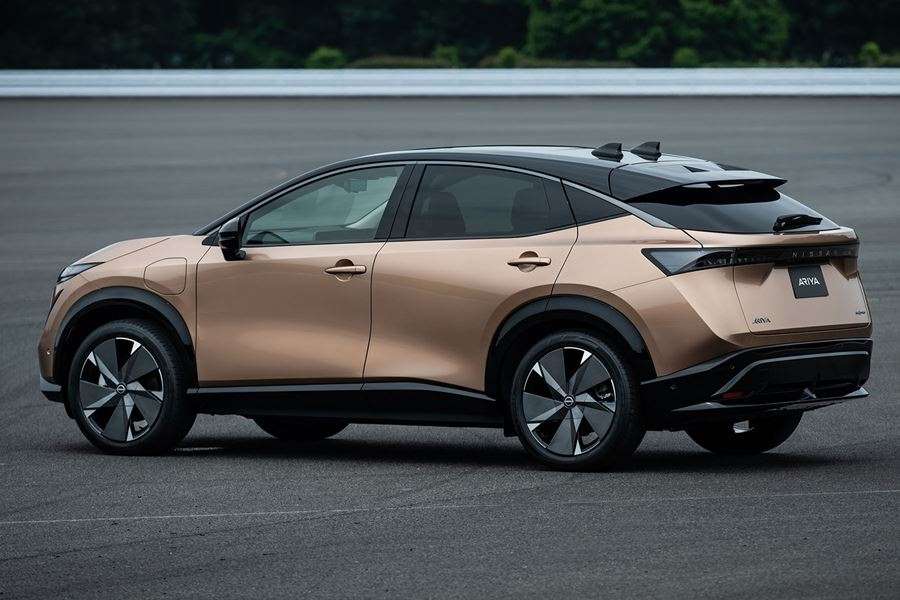
What's it like inside?
As you'd expect, it's bristling with the latest tech. You get a 12.3-inch central touchscreen alongside a 12.3-inch digital display for the driver, and a colour head-up display. There is a suite of driver assistance systems, including an enhanced version of the Leaf’s excellent ProPilot system semi-autonomous adaptive cruise control, with lane-keeping assistance and Nissan’s Safety Shield active safety systems.
The Ariya gets a new 'hey Nissan' voice control system as well as Alexa voice functionality. There's also a Nissan smartphone app to check battery status and set the climate control remotely as you can in many of its electric rivals.
Nissan says that it has the room of a much larger car inside, and this is down to the space efficiency of an electric car, which does not need to house the bulky engine and gearbox in the usual place.
It's a smart new look
The Ariya is certainly more stylish than the Leaf. There are ultra-slim LED headlights upfront, with a contrasting light blade at the rear. It gets animated indicators, two-tone paint schemes and sits on striking large wheels. The design was previewed in 2019 in a concept car – also called the Ariya – and much has remained unchanged going into production.
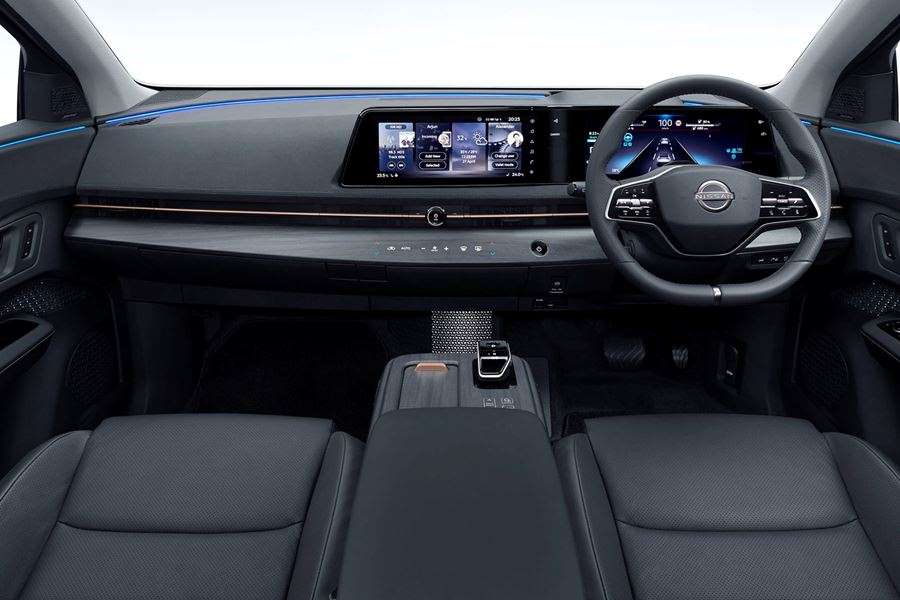
It has a long wheelbase (the distance between the axle lines), which should deliver that promised extra room inside. It's about the same length as an X-Trail, but the wheelbase is more than 7cm longer.
Performance and range – very competitive
The Ariya comes with the choice of two- or four-wheel drive, and will be offered with two power and torque outputs. The entry-level front-wheel drive 63kWh Ariya develops 220hp and 300Nm for a maximum speed of 99mph and a 0-62mph time of 7.5 seconds. Nissan says that this version will have a 233-mile range in real-world WLTP testing. The version with the larger 87kWh battery pack delivers 245bhp with the front-drive motor, and this one covers up to 310 miles on a single charge.
The four-wheel drive versions use what Nissan calls its e-4orce system. With the 63kWh battery pack you get 275hp for a 0-62mph time of 5.9 seconds and a range of up to 211 miles. The 87kWh four-wheel drive model boasts 310hp and 285 miles of range.
Star of the show will be the range-topping Ariya 87kWh Performance model. You get 395hp and 600Nm of torque for a 0-62mph time of 5.1 seconds. Maximum speed is 124mph. Battery range for the Performance model drops to 248 miles.
Charging options
The 63kWh Ariyas get a 7kW charger for home connections and the the 87kWh versions come with a 22kW three-phase set-up, where the home set-up can deliver this. The good news is that it uses the latest CCS charger set-up, and can support the fastest public charging, with up to 130kW.
Source: parkers.co.uk
2021 Nissan Kicks Review: Same Value, More Friendly
Still cheap, still cheerful, the 2021 Nissan Kicks keeps its tech current while adding some customizable flair.
Versus the competition: With its solid combination of safety equipment, multimedia tech, versatile interior space and value pricing, the Kicks holds its own against competitors like the Hyundai Venue, Kia Soul and other front-wheel-drive-only tiny SUVs. That lack of all-wheel drive keeps it from being fully competitive against models like the Ford EcoSport, Hyundai Kona and Honda HR-V.
The cheap and cheerful end of the SUV showroom is getting a lot of attention from automakers as buyers continue to eschew subcompact hatchbacks and sedans in favor of the slightly larger, slightly taller SUV-style models. Tall crossovers like the Nissan Kicks, Hyundai Venue and Honda HR-V are replacing the Nissan Versa, Hyundai Accent and Honda Fit in the eyes of consumers as the more desirable entry-level models. They’re more expensive than their sedan counterparts, but that hasn’t stopped buyers from making them their choice. In order to keep the Nissan Kicks competitive in the wake of a growing field of competitors, the brand has released a slightly refreshed version for 2021 with some subtle changes inside and out that it hopes will keep the diminutive runabout fresh.
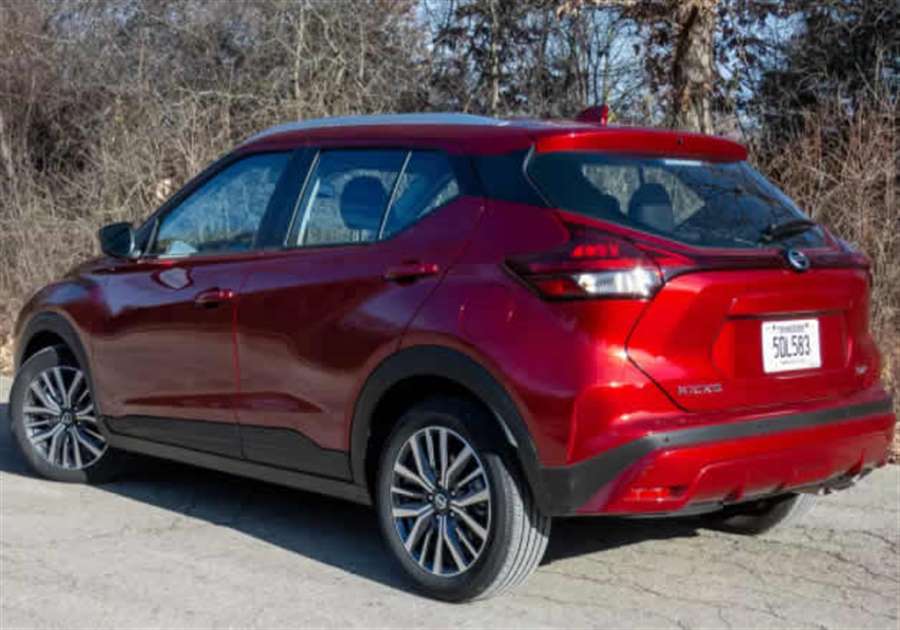
Looks a Little Sharper
Nissan has done a good job updating the look of the Kicks to more closely fit in with the rest of the redone Nissan showroom, all of which is getting a redo as part of the global Nissan Next product update plan. There’s a new grille, headlights, foglights, bumper and trim up front, and revised taillights and trim out back. The look is a very slight change, but it does modernize the Kicks a bit more, and it helps to draw the eye to a wider look even though the car’s track measurements haven’t changed at all. There are also some new wheels available, which are themselves customizable.
2020 Nissan Kicks Specs & Reviews Find a 2020 Nissan Kicks Near You
Nissan is introducing a new program that will allow Kicks buyers to personalize their rides through the Kicks Color Studio, which will offer more than a dozen colored elements — including wheel caps and inserts, mirrors, interior vents and more — that can be mixed and matched in ways to suit the buyer’s tastes. We haven’t yet seen what might be accomplished through use of the Color Studio, but the car itself does benefit from all of the styling changes that have been made. It sports the now-ubiquitous, optional, two-tone floating roof treatment that nearly all SUVs seem to have adopted, but its edgy styling does differentiate it from more generic boxes like the Hyundai Venue and Ford EcoSport. The difference between the 2020 and 2021 model Kicks is subtle, and you’d likely have to park one next to the other to spot the changes, but the new aesthetic is more attractive than the outgoing one.
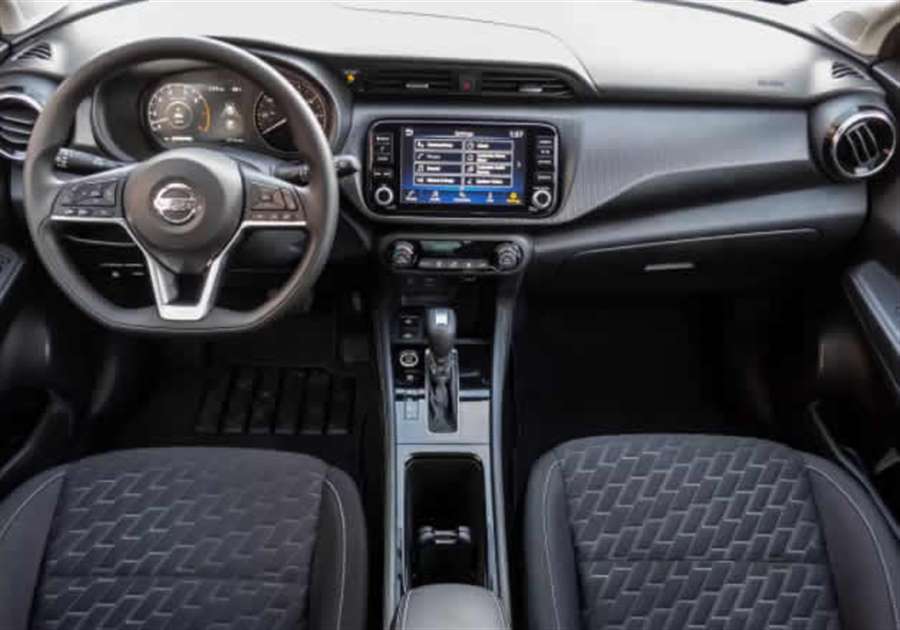
Hope You Aren’t in a Hurry
Powering the Kicks is a dinky 1.6-liter four-cylinder engine making 122 horsepower and 114 pounds-feet of torque. If that doesn’t sound like a whole lot of grunt, that’s because it’s not. It’s mated to a continuously variable automatic transmission that actually does a decent job of keeping the engine in its limited power band, giving the Kicks the descriptor of “adequately powered, but only just.” Let’s put it this way: In a stoplight drag race between a new Kicks and new 121-hp Hyundai Venue, neither would win. If you want more power, you’ll have to look to a Kia Soul, Honda HR-V or a turbocharged Jeep Renegade. But the lack of any sort of sportiness or alacrity to the drivetrain is OK, as the steering and handling aren’t tuned for entertainment purposes, either. The Kicks rides quite nicely, absorbing bumps and road imperfections with impressive damping, but it’s also a bit floaty, leaning more than you might expect in corners or on highway on-ramps. The steering is highly boosted and not blessed with a quick ratio, but again, this isn’t a ding against the Kicks, as the SUV is basically designed to do one thing well: be cheap, reliable, useful urban transportation.
The benefit of seemingly being powered by a band of lethargic gerbils is fuel economy that tops the list of competitors: 31/36/33 mpg city/highway/combined, unchanged from the 2020 model year. You won’t achieve those levels if you drive it with a heavy foot, but if you’re using the Kicks as it’s intended to be used, these numbers should be achievable. Part of the reason they’re achievable is that the Kicks is available only with front-wheel drive, similar to vehicles like the Hyundai Venue and Kia Soul, and unlike the Honda HR-V, Ford EcoSport and Jeep Renegade that offer optional all-wheel drive.
This really is intended as a city car, one you’d buy if you have limited parking space, fight narrow streets filled with delivery trucks all the time, or need a basic conveyance to get you and friends or cargo around town easily. In that role, the Kicks excels — lower-speed stop-and-go traffic is where it truly feels most at home, with excellent outward visibility, surprisingly good sound insulation and an upright, high-sitting driving position that makes you feel like you’re piloting something other than a dinky little subcompact SUV. It’s not that the Kicks can’t handle the highway — it does so rather well, with a surprising amount of steady high-speed calmness for such a small vehicle. It’s just that the compact dimensions, clever packaging and ease of use lends itself to tighter urban environments instead of America’s wide interstates.
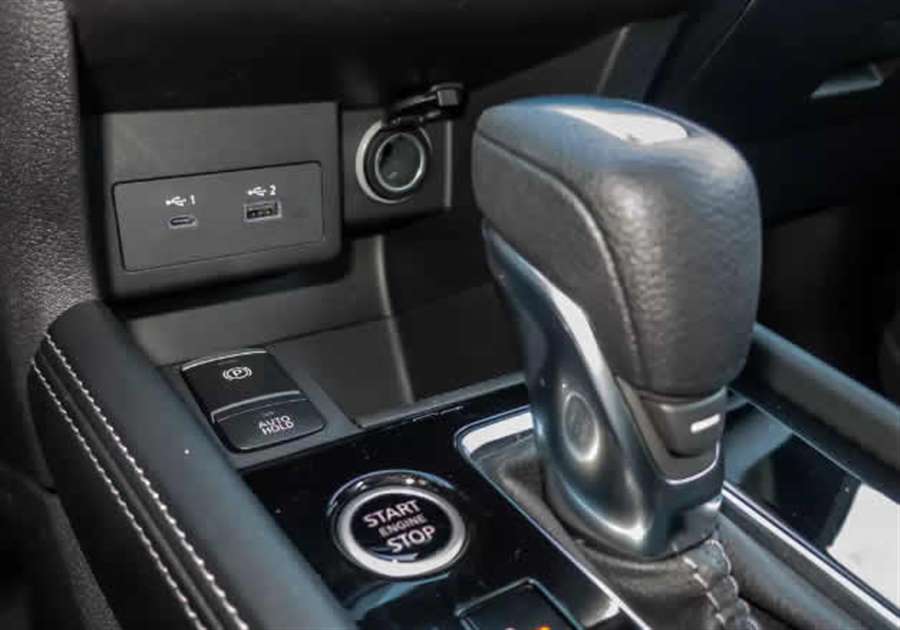
New Tech, Nicer Inside
The interior gets a little love from Nissan in this refresh, as well, but just like the outside, changes are minimal and designed to further improve the experience, not dramatically change it. First and foremost is the new optional 8-inch touchscreen; a 7-inch screen (2020’s only offering) is still standard. The new 8-inch model feels big in this compact interior, and all versions now feature standard Apple CarPlay and Android Auto, another thing that used to be optional. The rest of the interior looks largely the same, with Nissan insisting there are new materials, new vents, new trim and new covering material for the dash and doors. A new center console armrest replaces the previous driver-seat-mounted armrest, but it’s still too small and too low to be of any use for actually resting your arm.
The interior isn’t overly spacious, but it doesn’t feel cramped. The seats sit high but are oddly firm and not terribly comfortable for longer missions. Backseat room is adequate, with decent room for two to sit without their knees pressed against the front seatbacks. It doesn’t feel like it has the bountiful legroom of a Nissan Versa or Sentra, but it’ll do for getting friends to dinner across town or younger kids to soccer practice. The cargo area is surprisingly large, with a deep well and a surprising reach from the liftgate to the rear seatbacks that make for more room back there for luggage or boxes than you might expect to find. Of course, those seatbacks fold to increase the cargo area, but they don’t fold flat; they remain raised above the level of the cargo floor, so the surface isn’t totally flat for larger items.
Research the Nissan Kicks
The cabin is competitive with others in the class thanks to the updated multimedia system, the option of up to four USB ports (two type A, two type C), and its acceptable level of space and utility. The Honda HR-V still feels like it has a more cavernous cargo area, especially with its trick folding backseat stowed, and the Hyundai Venue’s interior feels a bit more upscale, with a multimedia system that simply seems better designed and a level of standard safety systems that hasn’t yet been beaten. But the Kicks feels like an easily viable alternative to any of them, with its subtle improvements keeping it in the hunt for those first-time buyers seeking something new and relatively affordable with all the latest tech, a solid level of standard safety equipment and a value equation that definitely works in its favor. It’s a decidedly competitive entry to the burgeoning field of entry-level vehicles and should be on anyone’s consideration list when shopping for one.
Full pricing for the 2021 Kicks was not yet available at the time of publication, but overall pricing is not expected to be appreciably different from the outgoing 2020 model given its starting price of $20,595 (including destination), a modest $430 increase.
Source: cars.com
2021 Nissan Kicks First Drive Review: Actually Kicking It Up a Notch
Small but welcome updates keep the nearly new Kicks SUV fresh and competitive.
If I'm entirely honest, the Nissan Kicks didn't have the makings of a hit when it was first announced for the U.S. market. Adapted from elsewhere in the world and a bit behind Nissan's own styling curve, it appeared to be a quick and dirty move to get something, anything in a suddenly hot segment. Driving it, though, revealed its charm. What it lacked in specs it made up in value and practicality. It surprised with a carefully chosen but impressive list of standard features and a genuinely enjoyable driving experience. Even so, Nissan has kept on top of updates, culminating in this smartly refreshed 2021 Nissan Kicks.
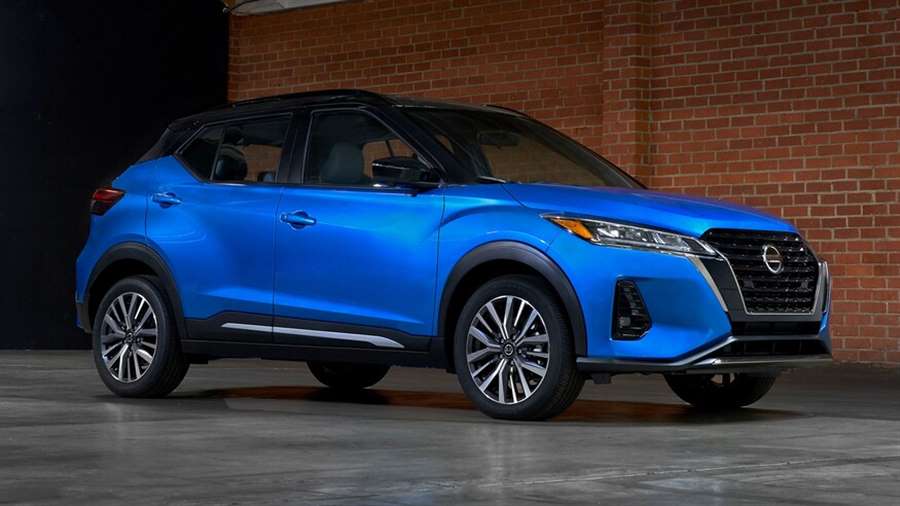
The biggest fix is right up front, where Nissan has given it a nose job. Although the Kicks has always had a fun, funky vibe going on, the old car's puckered face always made it look like it had already been on Nissan lots for years. Pumping up the grille and upgrading the headlights (all the way up to full LED units on the SR trim we drove) have gone a long way toward making the Kicks look like a new car rather than a retread. The rear end didn't need as much help but got it anyway for a net gain.
The most important work, though, was done inside. It sounds like a small thing, but a new center console is worth talking about here. Few things remind you of how cheap a car is as not having a center armrest for the front passengers. Nissan has fixed that with a full-length center console featuring an enclosed bin for your things, an armrest, and big cupholders. Deleting the old-fashioned handbrake made it all possible, and you get a modern electric parking brake as a bonus. Unfortunately, you do have to pay for it because you can only get it on the SV and SR trims. The base Kicks S keeps the old setup.
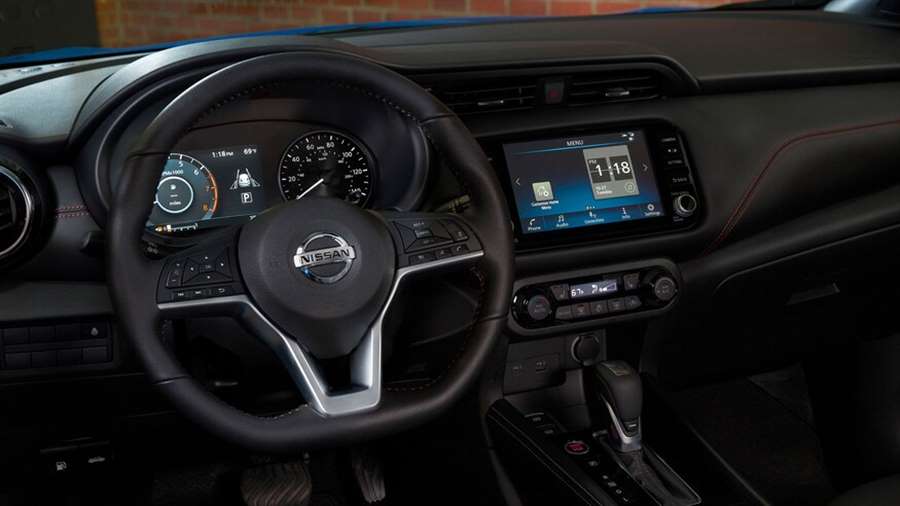
Hovering above all that is an updated infotainment system. Seven inches is standard, but it now provides Apple CarPlay and Android Auto functionality free of charge. The optional upgrade unit grows to 8.0 inches and now includes a Wi-Fi hot spot and over-the-air software update capability.
You have to look a little harder for the other big get. The Kicks has always had the hardware needed for adaptive cruise control but didn't offer the feature until now. Add it to the shockingly long list of active and passive electronic driver aids, which already got a big upgrade for the 2020 model year and most of which is standard on all models.
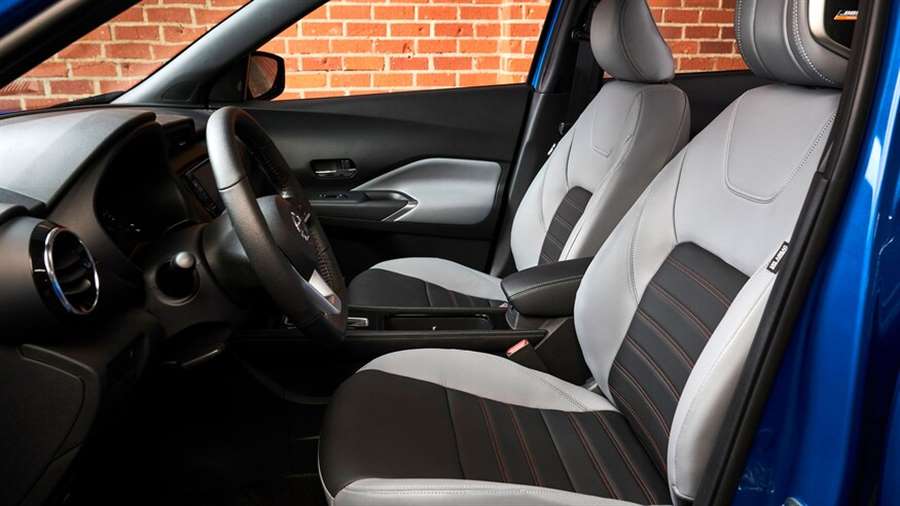
The new splashes of accent colors on the seats and doors are more visible. It's a small thing, but on a car with fun two-tone paint options, the black-on-black interior needed more pizazz, and it didn't take much to dress things up. The Kicks already felt like a screaming deal at $25,000 fully loaded (before dress-up accessories), and the '21 updates only make it feel like you're getting more for your money.
That feeling doesn't extend to the mechanical bits, but they were already doing a fine job. With only 122 horsepower and 114 lb-ft of torque and no substantial weight added, the Kicks drives exactly the same as it always has. Here again, there's nothing special on the spec chart, but Nissan does a lot with a little. Its simple suspension works quite well at providing a comfortable ride and chipper handling. It still has a bit of body roll, and the steering still feels disconnected, but somehow it's fun to swing around a corner when you get the chance.
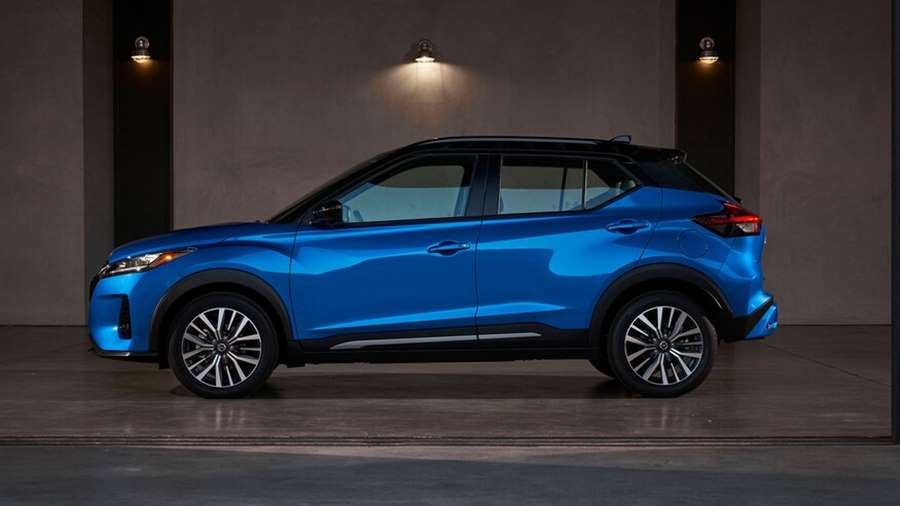
Similarly, the continuously variable transmission is tuned well to make it feel like the little engine is really trying. It's still among the slowest new cars on the road— it needs more than 10 seconds to get up to 60 mph—but its eager demeanor makes it feel quicker than it is. Meanwhile, it continues to get excellent fuel economy at 36 mpg on the highway.
It can get noisy getting up to speed and then cruising on the freeway, so I again have to recommend the SR Premium package if you can swing it. The Bose Personal Plus stereo included in the package delivers better sound quality than some luxury cars I've driven. It's an easy recommendation when the whole package, which gets you nice faux-leather seats, a security system, a cargo cover, and heated steering wheel and front seats, only rang in at $1,000 last year. Now, though, it includes the NissanConnect services, a WiFi hotspot, and over-the-air software update capability, so don't be surprised if the package price goes up.
Although Nissan hasn't released complete pricing yet, we do know the starting price has gone up by $430 to $20,595. That's still an incredible deal, though it's worth remembering the base model didn't get any upgrades. We're still waiting to find out how Nissan will price the SV and SR models with the new goodies. Even if those prices do go up a bit, the Kicks will likely top out in the neighborhood of $27,000, and that still could be a killer deal, especially now that there's even more to back it up.
I've always maintained the Nissan Kicks' greatest quality is its honesty. It's an inexpensive car that doesn't try to trick you into thinking it's something it's not. The good features aren't all reserved exclusively for the top trims or buried in dozens of add-on packages. Everything is straightforward and a solid value. It's a car that knows what features you actually want and delivers them with unpretentious style.
Source: motortrend.com
New Nissan GT-R Nismo 2020 review
The latest Nissan GT-R Nismo offers savage acceleration and sublime steering, but at £180k it's only for the very wealthy
Verdict
The 2020 GT-R Nismo could be a final farewell for Nissan’s iconic performance car – and it’s a fitting one, because it’s fantastic to drive, with a real depth of ability and great driver rewards. It’s the ultimate GT-R and still a unique experience in the performance car world, but at £180k it’s pricey. At nearly £80,000 cheaper but only slightly less powerful, the GT-R Track Edition seems like better value.
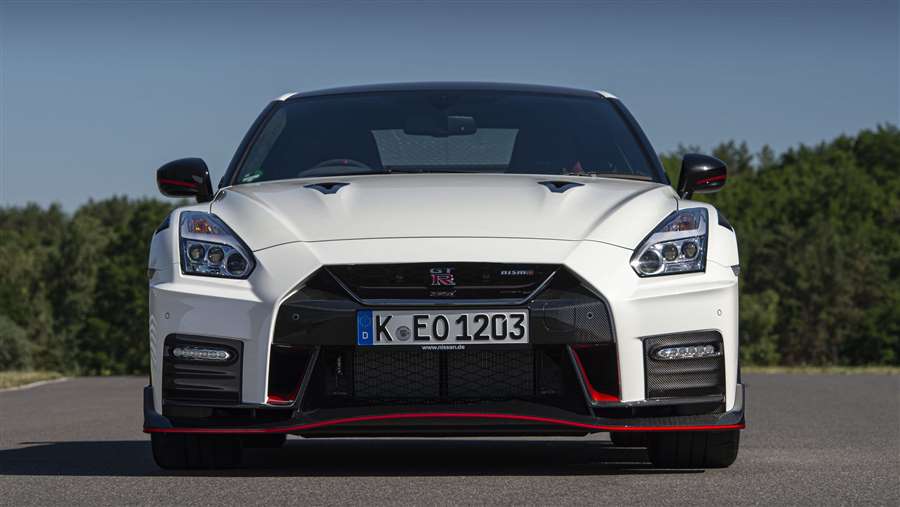
The Nissan GT-R is the perfect example of automotive evolution. Since the car was unveiled in 2007, one of its closest rivals, the Porsche 911 Turbo, has been facelifted, replaced entirely, then facelifted again before a new model launched this year.
Instead of launching new models Nissan has continued to hone the GT-R, the car that challenged the supercar establishment, with just one major facelift over its 13 years on sale.
In Japanese this is called kaizen – the constant need to evolve and improve – and it’s at the heart of the 2020 Nissan GT-R Nismo.
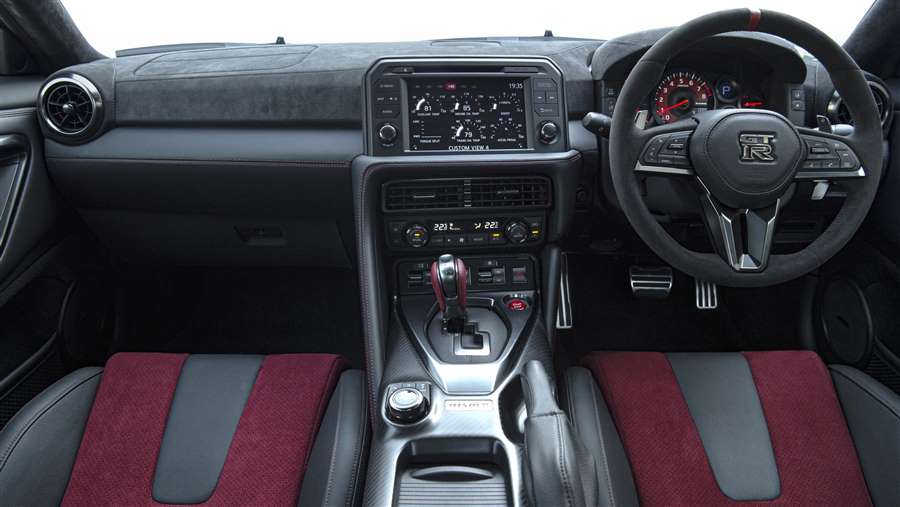
This could be the GT-R’s swansong, tuned by Nissan’s in-house motorsport arm. The Nismo features a carbon fibre bonnet, boot lid and a large fixed rear wing, carbon fibre bumpers and front fenders, and carbon fibre side sills.
There are Brembo carbon ceramic brakes measuring a massive 410mm at the front, and many carbon fibre vents and ducts to aid with cooling the enhanced 3.8-litre twin-turbo V6 engine. The new nine-spoke 20-inch forged RAYS alloy wheels are only 100g lighter collectively, though.
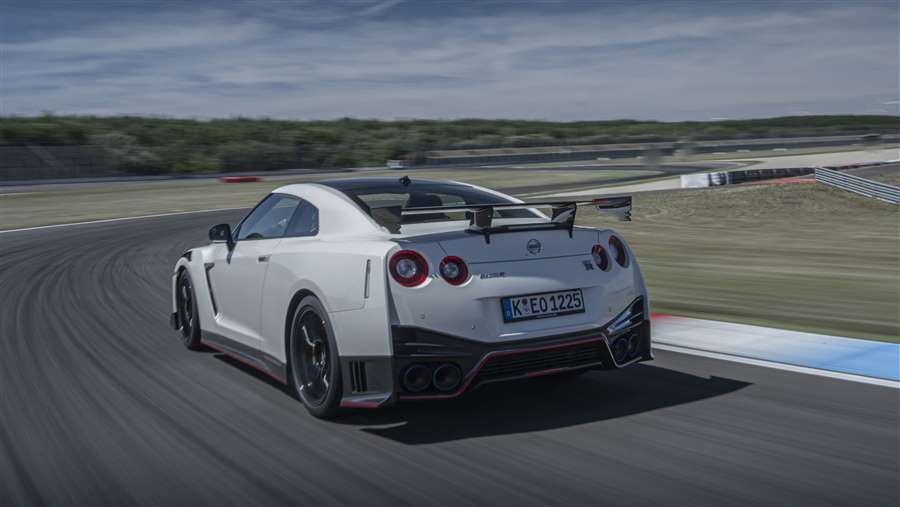
Thanks to a pair of turbochargers from the GT-R GT3 race car, the Nismo makes 592bhp and 600Nm of torque. That’s a lot, but despite the lightweight components the GT-R still weighs 1,725kg, which is also quite a lot for a track-focused model like this.
However, the GT-R has always used its weight to its advantage, controlling it well but using it to work the tyres (very lightly cut Dunlop Sports Maxx track rubber here) to find grip. With four-wheel drive traction has also traditionally been superb, and so it is here too.
The kaizen approach extends to the tweaks to the chassis as well. The Bilstein adaptive dampers have been reprogrammed to make them 20 per cent softer in rebound and five per cent softer in compression – a much needed change compared with the previous Nismo – that Nissan says has been possible due to the near 30kg weight saving.
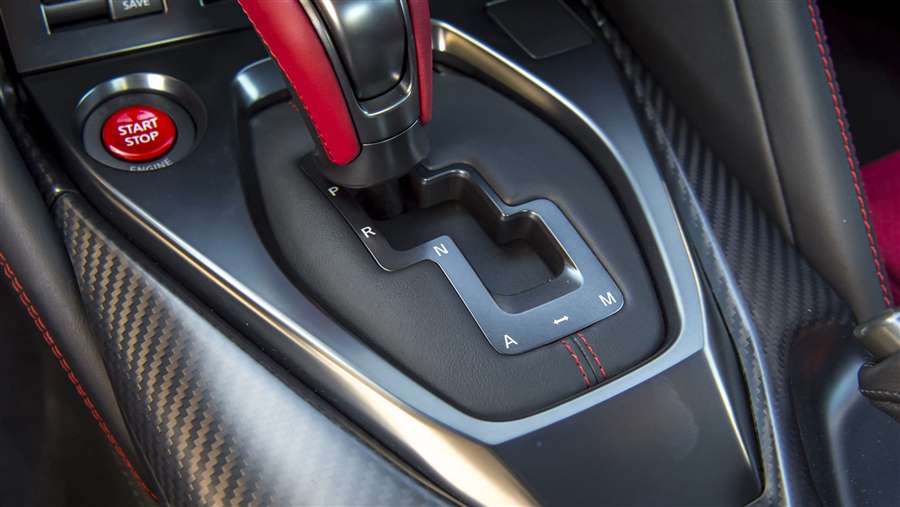
The chassis tweaks and new tyres (one fewer groove for a bigger contact patch) have improved the steering. This is one of the most surprising areas of the GT-R Nismo.
You’d expect it to be fast having looked at the figures, but given the styling, the weight and the four-wheel drive set-up, you might not expect the steering to be so delicate.
It offers genuine feedback. It’s subtle, but the light set-up means you can sense what those lightly treaded front tyres are doing, pulling cambers and the crown in the road, as well as when the fronts start to lose their purchase on the tarmac or load up in a corner.
Even on greasy roads with the temperature hovering just above zero, grip and traction are still great.
With the powertrain and stability control in R mode, and the suspension in Comfort to help even more with finding grip, the GT-R will tighten its line in a corner as you open the throttle. It’s a delightfully natural sensation despite the many, many calculations the car is making underneath you and means you can start to unwind the steering and focus on firing the car down the next straight.
The new turbos are claimed to enhance the acceleration response by 20 per cent; there’s still some lag, but it serves to make the ensuing onslaught as full boost hits all the more outrageous.
Nissan doesn’t quote a 0-62mph time, but around the 2.5-second mark in optimum conditions seems possible. In December over bumpy roads the engine’s aggression spikes the revs over bumps and ruts in the road, such is the massive thrust in the mid-range.
But the motor still revs hard right the way to its limiter like few turbocharged performance cars can. It’s accompanied by an aggressive, gravelly hiss as air is compressed and forced through the intakes by those new turbos, and a V6 howl from the revised titanium exhaust.
Few cars deliver their performance with a blend of brutality and delicacy as the 2020 GT-R Nismo. It’s undoubtedly packed full of tech, but given the sensations it offers and how these are reminiscent of the original, it seems almost old-school and analogue in many ways. The GT-R is sometimes thought of as being a digital car, but the Nismo proves it’s anything but that.
So the evolution of the species has worked here, but in some ways there are some big drawbacks to the GT-R. Despite the softening off of the set-up, and even in Comfort mode, the Nismo is firm. The damping always feels sophisticated, just still a bit much for the UK in the suspension’s default setting – and especially the racier R mode.
Occasionally it knocks the wind from your lungs in this mode – but not quite as much as when you clock the £180,095 price tag.
It’s a very accomplished car dynamically, but while the changes to the car’s interior for the facelift a few years ago injected a little more quality, the infotainment is still stone age compared with a Porsche 911 or an Audi R8. Quality is fine, but nothing more, even if the carbon backed Recaro seats are brilliantly supportive and very comfortable too.
At least the GT-R is practical, with two small rear seats and a fairly large 315-litre boot. It’s not so efficient though; all that power means figures of 19.7mpg and 325g/km CO2, if it matters to you.
Source: autoexpress.co.uk
New Nissan X-Terra SUV introduced
The Japanese company talks about this model as "completely new", which should mean that it is something really new, but the truth is a little different. It is a seriously modernized SUV prepared for the 2018 model year, which is called the Nissan Terra. The frame-mounted SUV was developed on the basis of the Nissan Navara pickup truck, which competes in the market with such rivals as the Mitsubishi Pajero Sport or Toyota Fortuner.
The Nissan Terra SUV is sold in China, Thailand, Indonesia and other Asian countries. That is why the new Nissan X-Terra is intended for the countries of the Middle East, and for that reason Terra had to be "withdrawn from the game" in order to be polished in a way to satisfy more demanding customers from these specific markets.
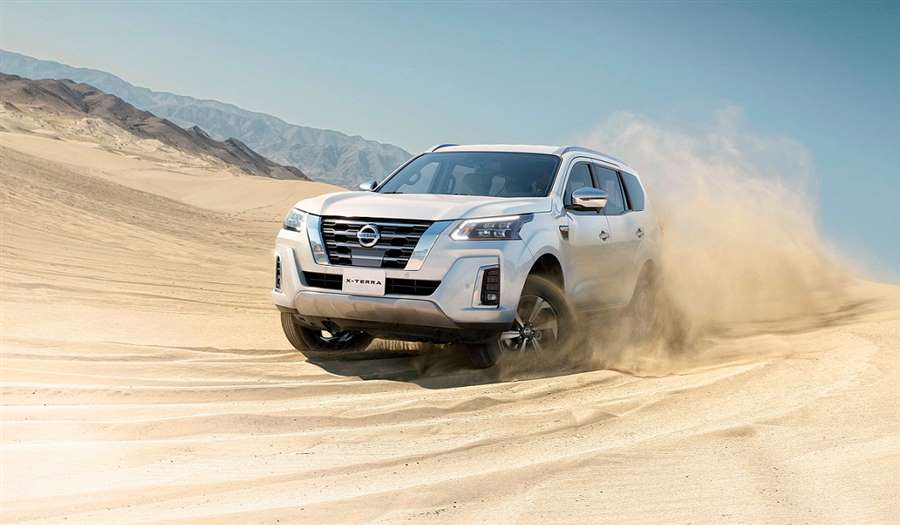
By the way, the constructor reached for the name of the newcomer in the company's archives, albeit with a slight change. The SUV of the same construction configuration was already on the production lines of the company under the name Nissan Xterra, in the period from 1999 to 2015.
The first generation of that vehicle was almost a global model (North and South America, China, Central Asia, the Middle East), but the second generation model is known only to drivers cruising on North American roads.
So, the Nissan X-Terra shown here differs from the original with the Terra sticker in a more seriously modified body style. The muzzle is styled in line with what we saw on the recently updated Patrol model, while the rear end is adorned with various heel doors and lighting in LED technology.
The rims are adorned with a diameter of 17 or 18 inches, while the ground clearance is really enviable and amounts to as much as 243 millimeters. As a result, the restyled 4,900-millimeter-long SUV looks significantly more solid than the donor model.
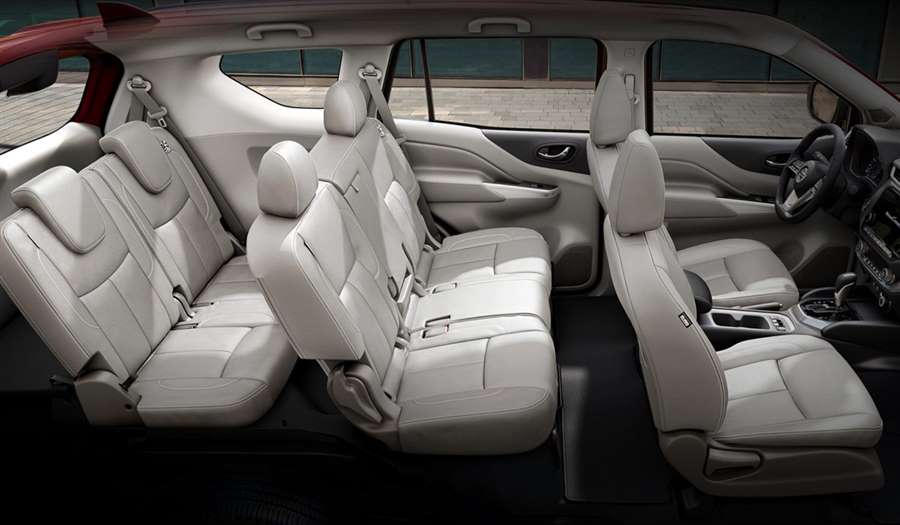
That is why the interior is completely new. If the Terra had an identical front panel as seen on the Nissan Navari pickup, then the X-Terra offers a completely original interior. It is made in the style of modern crossovers of the Japanese brand.
The instrument cluster, with a seven-inch screen, is placed in the middle of that mini panel, while on the central ridge there is another screen of the multimedia system, which can be eight or nine inches diagonally, depending on the configuration.
There is still the third row of seats. The most positioned variant offers an autonomous braking system in critical situations, monitoring of events in the area close to the vehicle, but which is in the driver's blind spot, assistance in maintaining the direction within the traffic lane, as well as some other electronic aids. On top of all the above, it should be said that the sound insulation has also been improved.
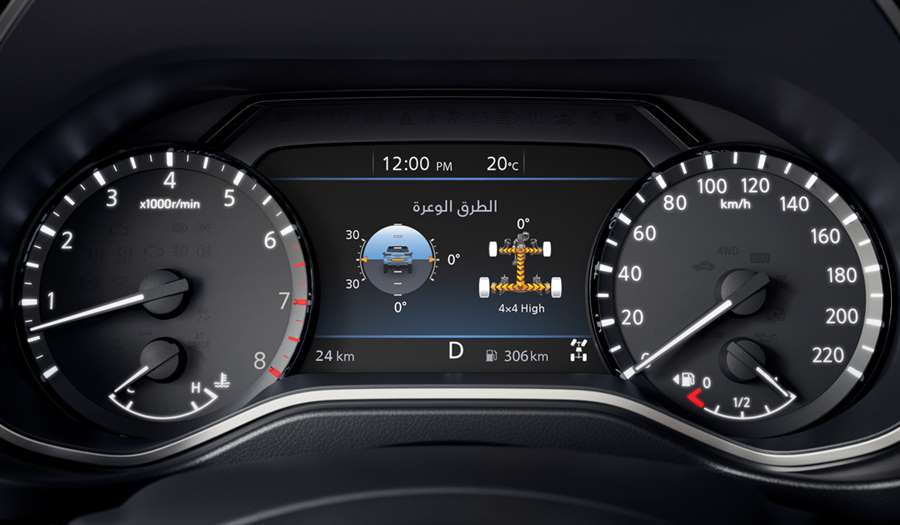
When it comes to the powertrain and chassis, it is necessary to say that these components are identical on the Terra and X-Terra models. The chassis is with double springs at the front and a continuous shaft at the rear end along the coil springs. The drive is on all four wheels with a tight connection and locking of the rear differential. There is also a reducer. There is also an electronic imitation of the lock.
However, the base version of the X-Terra has rear-wheel drive. Since we know that diesels are not at a price in the Middle East, the manufacturer has prepared a petrol, atmospheric 2.5-liter engine for the Nissan X-Terra SUV, which delivers 165 horsepower with 241 Nm of maximum torque. The engine is paired with a seven-speed automatic transmission.
Sales of the new model will begin in December while the starting price will be at the level of 27,200 US dollars. To add that, in Nissan’s global range, Terra and X-Terra will co-exist, and will not overlap in the same market. For example, the Nissan Terra for the 2020 model year was presented in Thailand a few days ago.
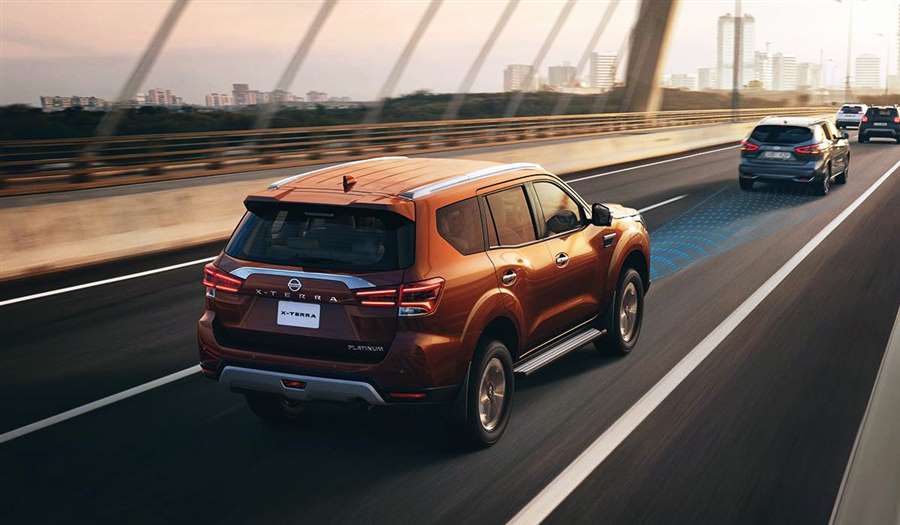
Either way, it’s possible that in a year or two, the Asian Terra will become just as advanced as the X-Terra is today. However, we do not believe that any of these models will reach Serbia, nor the surrounding countries.
The first details about the all-new Nissan Qashqai
One of the first and best-selling mid-size SUV models in the world is Nissan's "Qashqai". The third generation of this crossover is now in preparation, which, according to the announcements, will bring many changes in design and advanced technologies. As expected, electrified versions will be offered for the first time.
As a pioneer in the medium crossover segment, the "Qashqai" has been sold in Europe since 2007, where over 3 million units have been produced to date.
By the time it was replaced by the second generation in 2014, 17 direct competitors followed the "Qashqai" in the market with their models.
Despite the arrival of many European competitors, the first generation is sold in over 200,000 units per year during its lifetime.
Now the current model has as many as 26 direct competitors, among which are: "Renault Kadjar", "Ford Kuga", "Hyundai Tucson", "Mazda CKS-5", "Skoda karoq" and many others.
That is why it is very important for the new generation to continue at a successful pace and that is why its approach is very serious.
The new Qashqaii is based on the all-new CMF-C (Renault-Nissan) platform. It has been announced that it will use technologies from higher categories of cars, as well as that the proportions will be maintained. In terms of construction, the body will be lightened by as much as 60 kg, but also 41% stronger.
For now, it is known that it will be offered with front-wheel drive and 4 × 4, as well as with a 1.3-liter gasoline engine with mild hybrid technology, and Nissan's innovative e-POVER system, which contains an electric drive, is mentioned.
In conventional hybrid wheel systems, it is powered by an electric motor and a petrol engine, however, in the e-POVER system, the petrol engine is not connected to the wheels - only on a full battery.
The new "Qashqai" will be equipped with the next generation of ProPILOT for driving assistance, and the premiere is expected in the spring of 2021.
2021 Nissan Rogue Review: More Steps Forward Than Backward
The verdict: The redesigned 2021 Nissan Rogue adds much-needed driving refinement, though it comes with a bothersome side of ride firmness.
Versus the competition: Return shoppers will miss the outgoing Rogue’s soft ride, but firm suspension tuning never stopped a compact SUV from selling like gangbusters. Other aspects run the gamut, and our overall impression is two steps forward, one step back.
Redesigned for 2021 with running lights spaced high above the headlights — a look popularized by the old Juke and, now, a smattering of Hyundai models — the Nissan Rogue comes in four trim levels: S, SV, SL and Platinum. Each offers front- or all-wheel drive; compare the trims here or stack up the 2021 and 2020 Rogue here. Don’t confuse it with the Rogue Sport, a smaller model based on a separate platform. All trim levels pair a 2.5-liter four-cylinder engine with a continuously variable automatic transmission. We evaluated a Rogue SV AWD.
Improved Road Manners, Mostly
Competitors steadily surpassed the outgoing (2014-20) Rogue in the all-important battleground of ride and handling. When we compared Nissan’s compact SUV against the field in late 2017, it ranked mid-pack in ride quality and last, by a mile, in handling. The redesigned Rogue makes significant strides on the latter front, with a quick enough steering ratio for precise directional adjustments as you negotiate sweeping on-ramps. Nissan dialed back much of the prior generation’s nose-heaviness and numb steering, too. Steering and dynamics aren’t exactly towering strengths for the new Rogue, but they’re far from liabilities.
Unfortunately, that comes at a cost: The suspension introduces a degree of impact harshness over potholes and sewer covers that the outgoing Rogue dispatched with minimal complaint. Nissan says suspension tuning is the same across all trim levels, and our SV test car had 18-inch wheels (S trims have 17s, but the SL and Platinum have 19s, which may ride harsher still). Overall isolation and body control are fine, but the shock firmness is puzzling, given the Rogue’s comfort-oriented history. Perhaps Nissan benchmarked the current-generation Honda CR-V and Toyota RAV4, two popular but firm-riding rivals. In any case, the pendulum has swung both ways at Nissan: The recent Sentra redesign stays fittingly soft, while the current-generation Altima skews firm.
The 2021 Rogue gets the same 2.5-liter four-cylinder engine from that Altima (here it makes 181 horsepower and 181 pounds-feet of torque), rejiggered from an earlier 2.5-liter that preceded it. Paired with a CVT that raises revs fast enough from a standing start, the 2.5-liter provides enough power around town but needs most of its reserves to reach highway speed, especially with multiple occupants aboard. If you need more power while already in motion, the CVT again increases engine rpm quickly enough. It’s slightly quicker in a driver-selectable Sport mode, but that setting keeps revs awkwardly high all the time — not simply hastening the transition, as effective Sport modes often do.
The Interior: Quality and Utility
Rife with all the trending elements in today’s automotive interiors, the Rogue’s cabin features a floating touchscreen, electronic gear selector and high center console, plus lots of stitched dash and door surfaces. Quality mostly lives up, with generous padding where your arms rest and a sturdy grade of fabric upholstery in our test car. Cost-cutting becomes evident once you get to the backseat — the norm in this class, though a few rivals improve on it. Leatherette (vinyl) and leather are both optional, and upper trims pad where your knees meet the console. That’s a useful provision, as its bulky design inhibits some lateral space. Nissan’s spring-loaded electronic gear selector feels a bit rickety to operate, but it’s a rare blemish among otherwise high-quality controls.
Interior storage is in good supply. With no mechanical linkage to select gears, the center console has a medium tray underneath, plus multiple cubbies around the cupholders. Gone is the outgoing Rogue’s deep glove compartment, but the other nooks more than make up for it. Unfortunately, utility behind the front seats takes, well, a slight backseat. The rear seats lose the outgoing Rogue’s 40/20/40-split, reclining functionality and sliding adjustment, the latter of which allowed owners to maximize cargo or passenger space; now the seat just reclines in a traditional 60/40 split. Legroom is fine, but the bench sits a bit closer to the floor than before, such that some adults may find their knees uncomfortably elevated.

We measured 17.1 cubic feet of cargo volume behind the backseat in our Rogue SV, and that’s with a fixed cargo floor. SL and Platinum grades get Nissan’s Divide-N-Hide cargo system, which has a dual-level load floor that should add slight volume. In any case, the SV’s room lands within fighting range of others (we measured 18.7 cubic feet in a Toyota RAV4 Prime, for example). Note that it comes by way of our independent accounting of cargo space, a practice we’ve instituted amid inconsistent methodology from manufacturer-reported volumes.
Technology and Safety
The Rogue’s standard 8-inch touchscreen has Apple CarPlay and Android Auto, both via tethered connections, and two USB ports. Tech options include two additional backseat USB ports and an upsized (9-inch) touchscreen with wireless CarPlay, plus 12-inch virtual gauges, wireless smartphone charging and a Bose premium stereo. (Android Auto is strictly a tethered connection; no wireless connectivity is available.)
As of this writing, third-party crash tests have yet to be published for the 2021 Rogue. Standard safety features include automatic emergency braking with pedestrian detection as well as blind spot and lane departure warning systems. Nissan’s ProPilot Assist system, included on the SV grades and up, incorporates adaptive cruise control with hands-on lane-centering steering, both of which work from a stop all the way up to highway speeds. Note that this isn’t the automaker’s second-generation ProPilot Assist with hands-free lane centering, which debuted on the new Ariya SUV.
Features and Pricing
Including destination, the 2021 Rogue starts just under $27,000. That’s a stone’s throw from its predecessor, and in the thick of its rivals’ starting prices. Characteristic of the class, it’s well equipped on the safety and multimedia fronts but basic beyond that: Rogue S shoppers can expect manual seats, cloth upholstery, manual climate control and basic keyless entry.
Climb the trim levels, and you can get a panoramic moonroof, hands-free power liftgate, vinyl or leather seats, keyless access, power front seats (though without a passenger height adjustment), tri-zone climate control and heated seats in both rows. A loaded Rogue Platinum AWD tops out in the high $30,000s, which is also competitive.
Naturally, the Rogue’s improved agility is a modest adjustment to what it once was; this is no sports car masquerading as an SUV. The improvements come at some expense to comfort, and the utility setup takes half a step backward. But the SUV takes more steps forward, and it doesn’t come with a huge jump in price. In balance, it’s a notably better SUV than the one it replaces — something shoppers who don’t prioritize comfort or utility can appreciate.
Source: cars.com
2022 Nissan Juke
Nissan's boldly-styled baby SUV is back
Nissan Juke will arrive in UK showrooms next year, complete with more interior space and bolder styling than ever before, an all new.
What is the 2022 Nissan Juke?
Thanks to its bold styling, the Juke is the smallest SUV that Nissan makes, and stands out from the crowd. It’s an important vehicle in the history of the automobile, Nissan also says, claiming the first generation of Juke, launched in 2010, pioneered the compact crossover class that is now one of the most hotly contested sectors of the new car market. Mind you, other car makers have made similar claims, the three-door Toyota RAV4, for example, was launched a full 16 years before the Juke.
Nissan’s mini-crossover has proved extremely popular and in July last year the one millionth Juke rolled off the production line at Nissan’s Sunderland Plant, whatever. Nissan said a brand new Juke is built at the plant every 105 seconds, in a press release announcing the milestone.
It’s now nine years since it first appeared on our roads, but the model is overdue an all-new version.
Nissan has retained much of its bold design, though its reworked front end is likely to put off fewer buyers, because a big part of the original Juke’s appeal stemmed from its divisive styling, its bug-eyed headlights in particular.
However, the car maker has made big changes under the skin, the new Juke is claimed to have 20% more boot space than the original model and it comes this time with much more gadgets and technology. The car is much better to drive, of course, Nissan says.
Patriotic British motorists who are interested in a new crossover may want to consider the new Juke, as the car will still be built in Sunderland, at the time of writing for the foreseeable future at least, while Nissan is a Japanese company.
What engines will the 2022 Nissan Juke have?
Nissan Juke buyers will have access to just one engine, a 1-litre, turbocharged three-cylinder petrol that produces 115bhp, from launch. As it’s the same spec fitted to the facelifted Nissan Micra we reviewed back in February 2019, regular readers of Driving.co.uk might very well be familiar with this engine. The new Juke comes out of the box with a six-speed manual transmission, like the equivalent Micra.
A seven-speed automatic is available on all trims bar the entry-level “Visia” spec as a £1,400 optional extra, unlike the similarly-sized supermini. The 1-litre engine in the Micra can return 47.9mpg on the combined cycle, but fuel economy figures will be revealed closer to launch.
The new Nissan Juke will only be available as a front-wheel drive car, it’s also expected.
Will there be a hybrid or electric Nissan Juke ?
It hasn’t said anything about adding more motors to the mix, while Nissan has confirmed the engine it will launch with the Juke. It remains to be seen whether the car maker has any plans to launch a hybrid Juke variant anytime soon,also.
The Renault-Nissan-Mitsubishi Alliance is no stranger to electrified car tech, Nissan builds the pure-electric Leaf in Sunderland, and Renault is currently working on a hybrid engine for its new Clio supermini, a hybrid Nissan Juke isn’t beyond the realms of possibility, as well.
What tech will the 2019 Nissan Juke feature?
Juke perhaps unsurprisingly is a more advanced piece of kit, with nearly a decade separating the original car from the new version, the second-gen. It will feature an impressive array of safety aids, in particular.
Will come all versions with lane departure warning, autonomous emergency braking, lane keep assist, traffic sign recognition and an “Active Trace Control” that applies the brakes to individual wheels to help the car hug the inside of corners.
Available other items across the range as standard or optional extras, depending on the trim buyers go for, include: Apple CarPlay and Android Auto, reversing cameras, automatic climate control, heated front seats, Bose premium stereo system, Nissan’s suite of semi-autonomous Pro Pilot driver aids.
How spacious is the 2022 Nissan Juke’s interior?
So it’s no surprise the car maker has made big strides to improve this in its replacement, because the original Nissan Juke was criticised for its limited practicality. Being barely any bigger than its predecessor, the new Juke is now much more spacious: at 422 litres, the boot is 20% bigger than it was before, and Nissan says head and leg room have grown by 1.1cm and respectively 5.8cm.
How much will the 2022 Nissan Juke cost?
It’s not a huge surprise the latest Nissan Juke is a bit pricier than its predecessor, with all the new tech on board. The previous Juke in entry level Visia spec started at £15,520, the same trim on the new Nissan will set buyers back £17,395. For the flagship spec, the gadget-laden Tekna+ spec, price begin at £23,895.
An even plusher ‘Premiere’ trim will be available, from £23,995 from lunch. Identical to the Tekna+ trim, this version is differentiated from the other models by its race car like Alcantara fabric interior trimming, 19in alloy wheels, a claimed first for a Nissan Juke, as unique body styling and an exclusive black body and red roof paint scheme. Get your order in quick, as only 140 examples will be coming to the UK, if that’s the spec for you.
When will the 2022 Nissan Juke go on sale?
For the new Juke, Nissan now accepting orders. The end of November 2019, the car maker claims the first customer cars should land in the UK towards.
What are the Nissan Juke’s rivals?
The latest model will have many cars to compete against when it arrives on UK roads, with the compact SUV market having exploded in the 10 years since the first generation Nissan Juke was unveiled.
Main competitors of the new Nissan Juke’s include the Kia XCeed, Volkswagen T-Cross, Citroën C3 Aircross, Hyundai Kona, Kia Soul, Mazda CX-3, Fiat 500X, Peugeot 2008, Ford EcoSport, Renault Captur, Vauxhall Mokka, Jeep Renegade, Honda HR-V, SEAT Arona, and Toyota C-HR.

